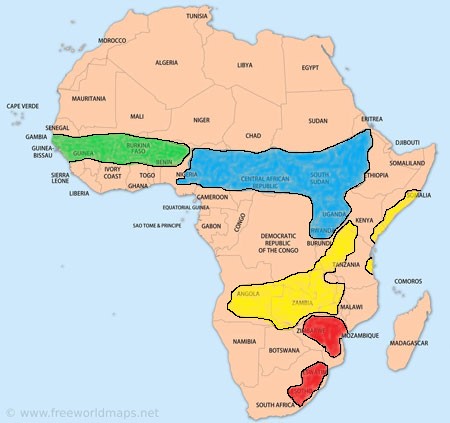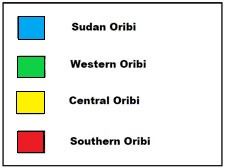 |
 |
Ourebia hastata
Also called coast oribi. Named in 1885 after its discoverer, Jack Haggard, British vice-consul at Lamu, Kenya, who was the brother of adventure writer H. Rider Haggard.
DESCRIPTION A small antelope with a long slender neck and legs. Its color is a heavily speckled rich ocher yellow with white underparts. It has a black tail, even on the undersides. The face has darker patches on its face and crown, and a dark bare patch below its long, oval ears. It also has white markings on either side of the nostrils and white crescent-shaped bands above the eyes. Males have small preorbital glands in front of the eyes. Females are generally larger than the males. Weights range from 11 to 17kg. Very similar to the Sudan oribi. The Haggard oribi is the most distinctive race of oribi. It is much lighter in color than other races, being an overall light clay and lacking the darker patches on forehead and crown. The horns are deeply ringed at the base, compressed laterally rather than circular in section, and thicker than in other oribi.
DISTRIBUTION North of the Zambezi River in Mozambique to Zambia, Botswana, Namibia, and Angola. Coastal Kenya (Haggard's oribi), the southern coast of Somalia, and along the lower Juba and Webi Shebeli rivers in Somalia, and the Serengeti ecosystem south through Tanzania. There are large distribution gaps in Tanzania and northern Zambia.
HABITAT Uses woodlands with rocky oucrops in the dry season and travels further into lond grass areas in the wet season.Tends to avoid open grasslands and often associate with impalas and hartebeest, but not wildebeest.
TAXONOMIC NOTES Formerly included12 subspecies. Now, quadriscopa (Western), montana (Sudan), and hastata all elevated to full species. Includes the haggardi (Haggard's oribi) and rutilia (Angolan oribi) subspecies.
|





